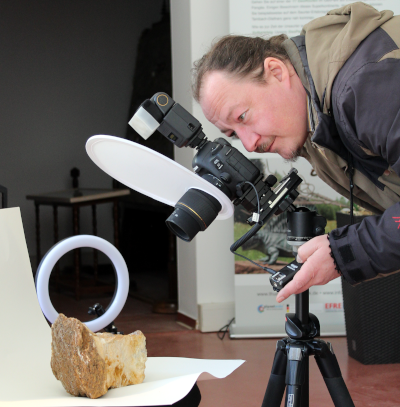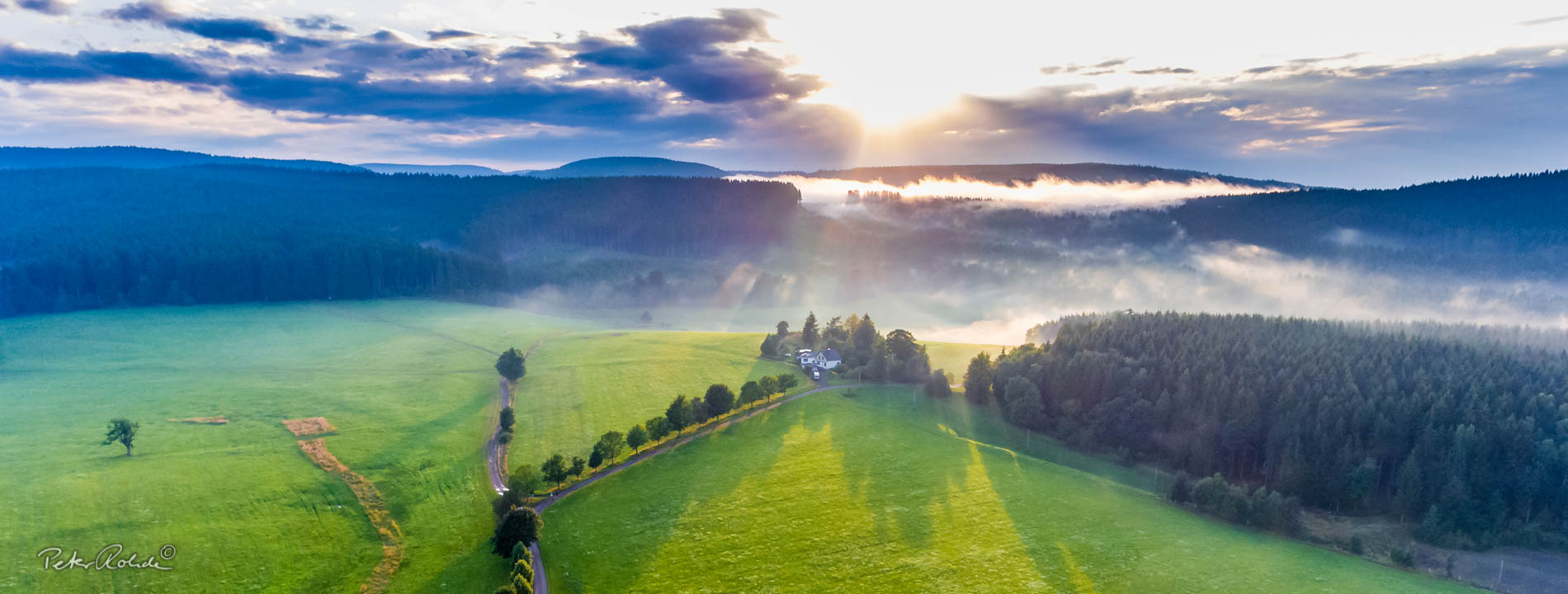
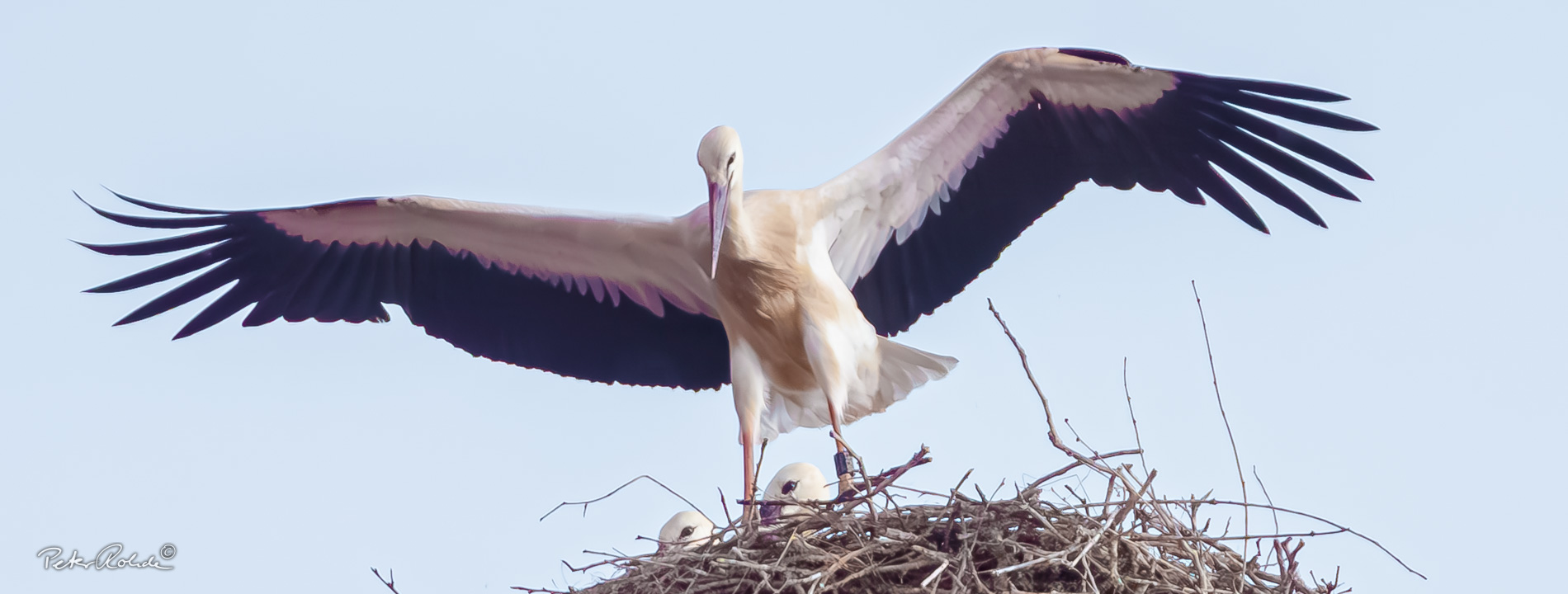
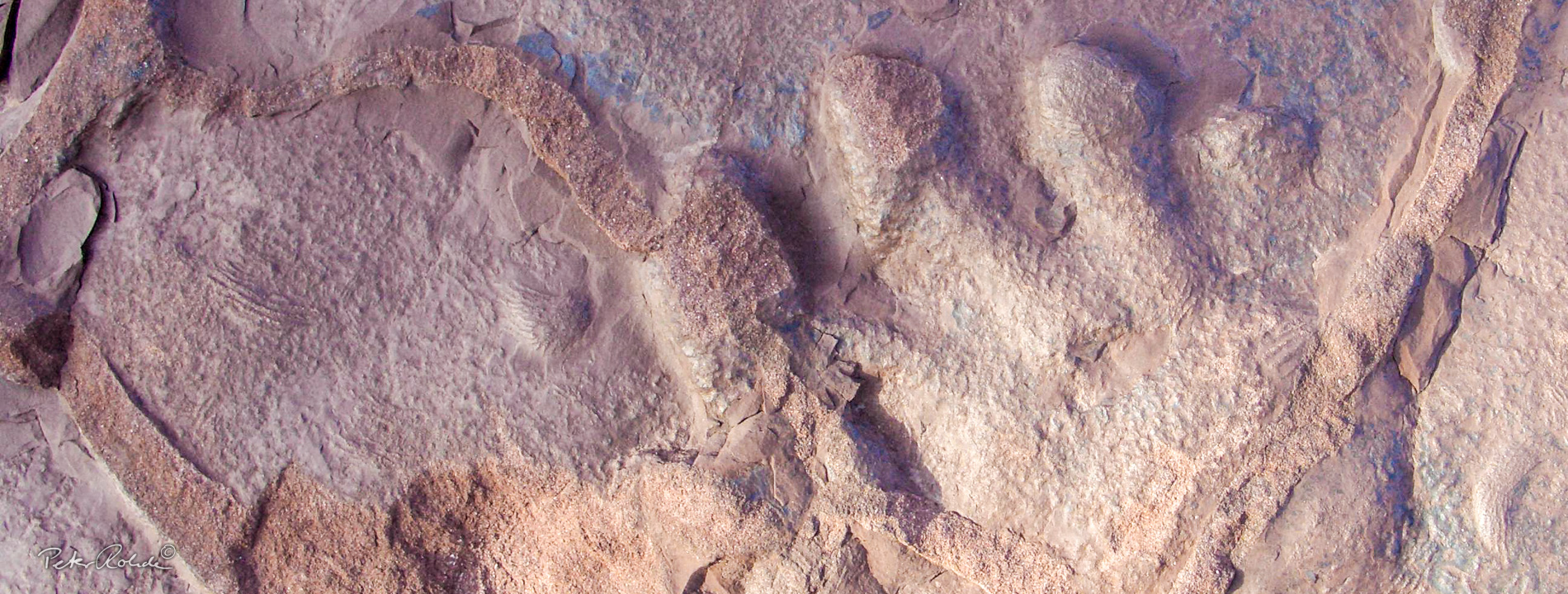
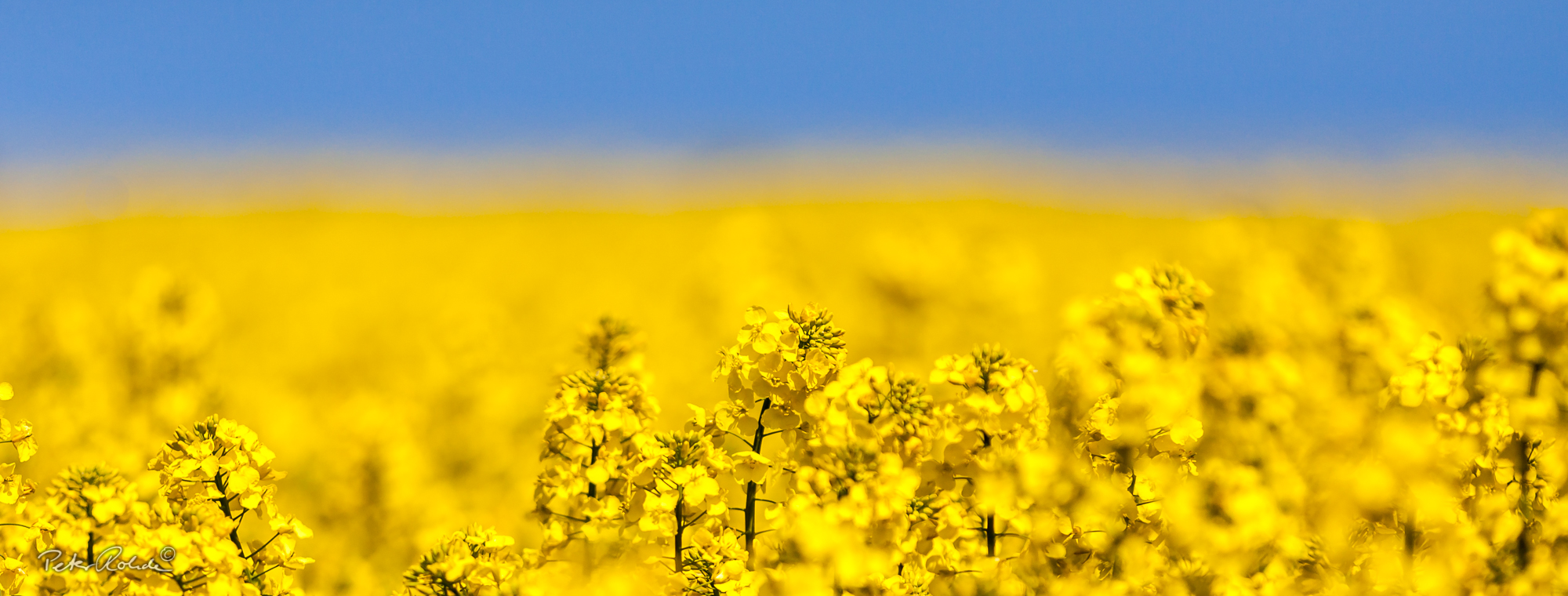
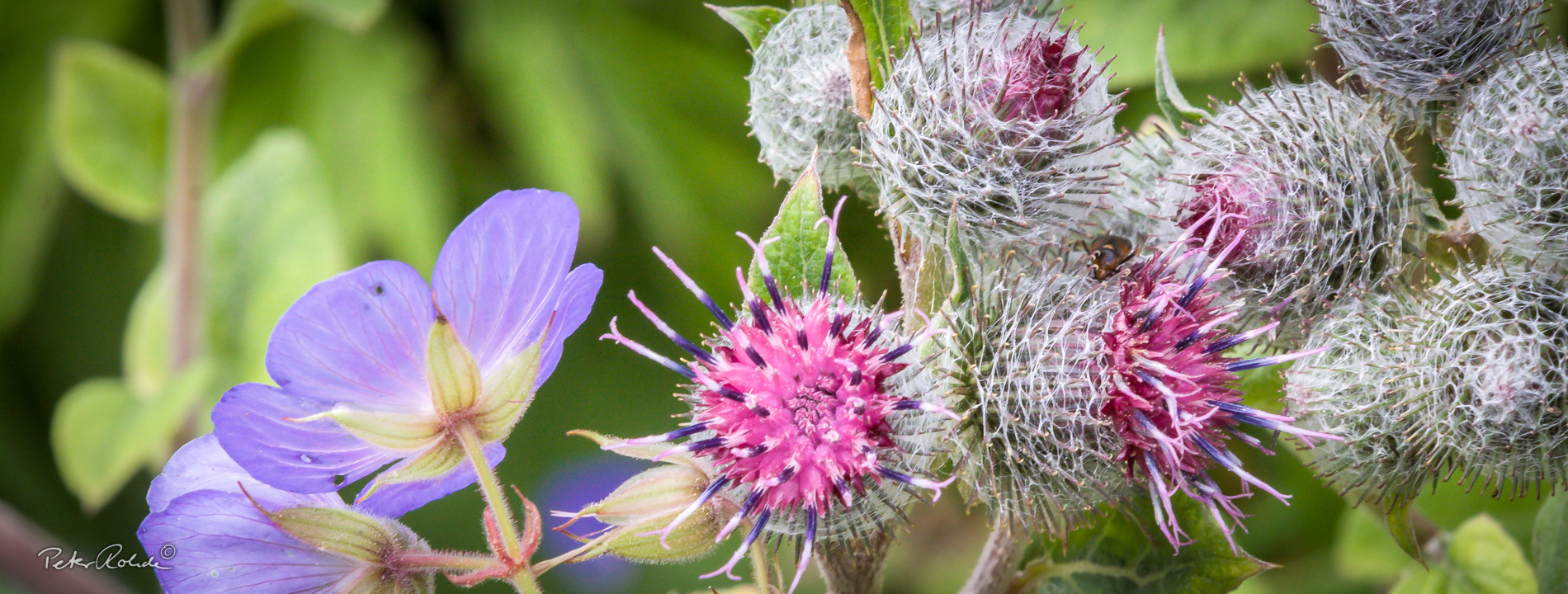
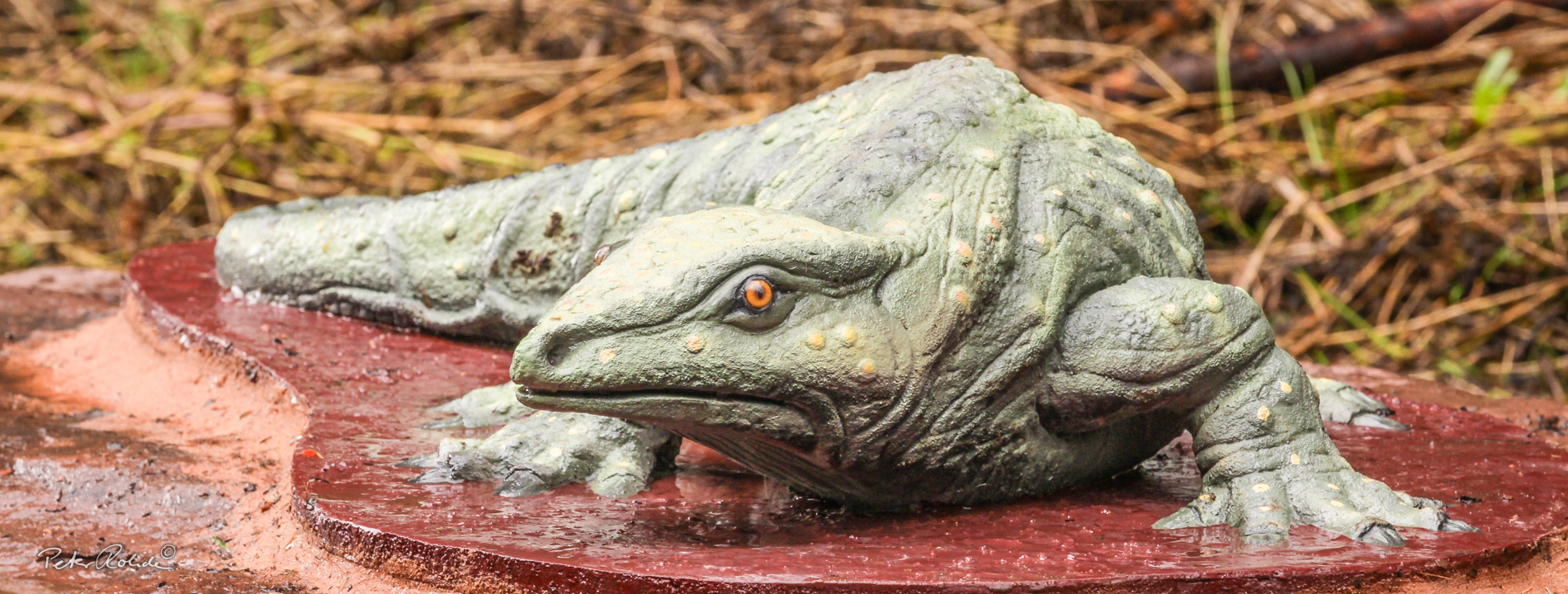
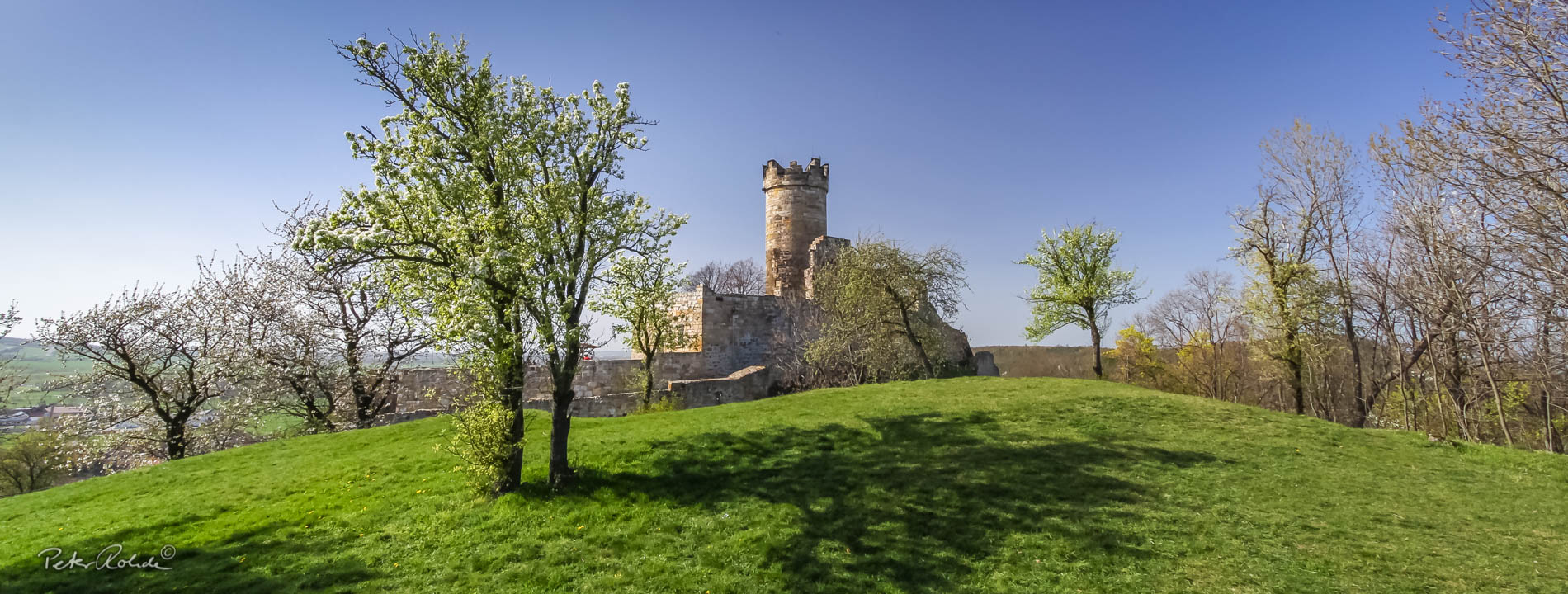
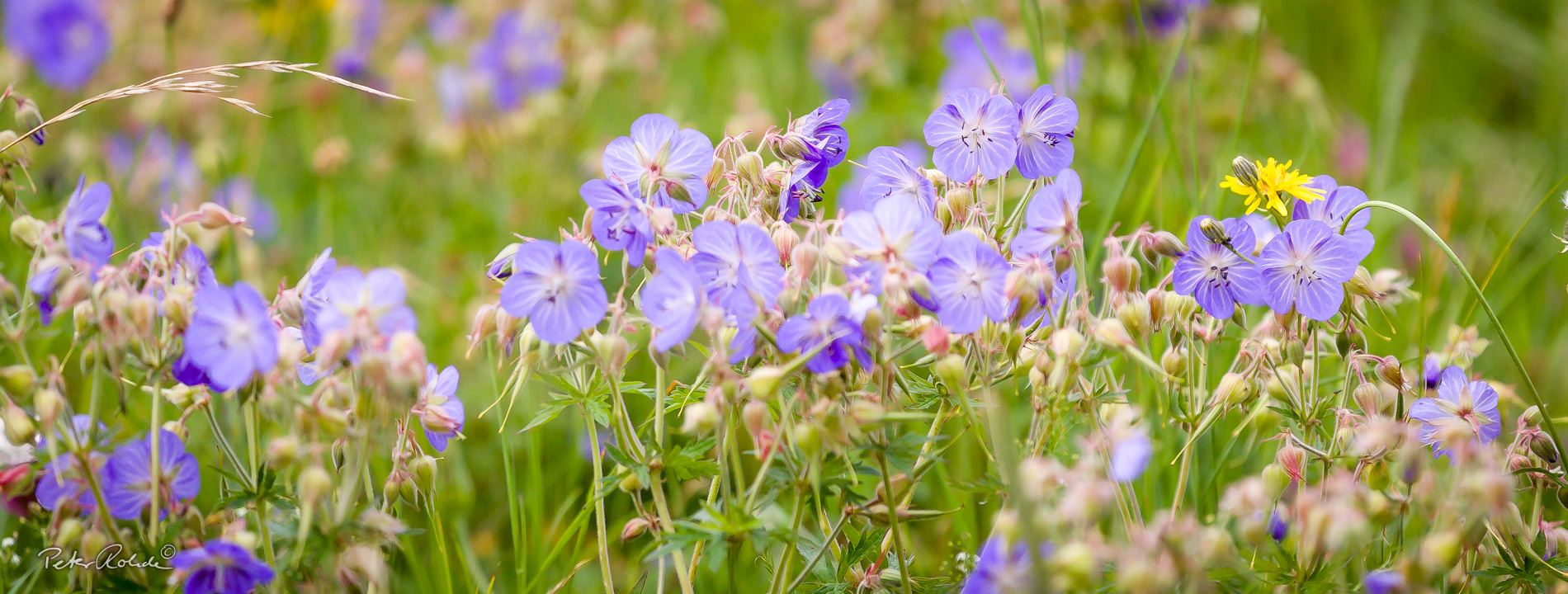
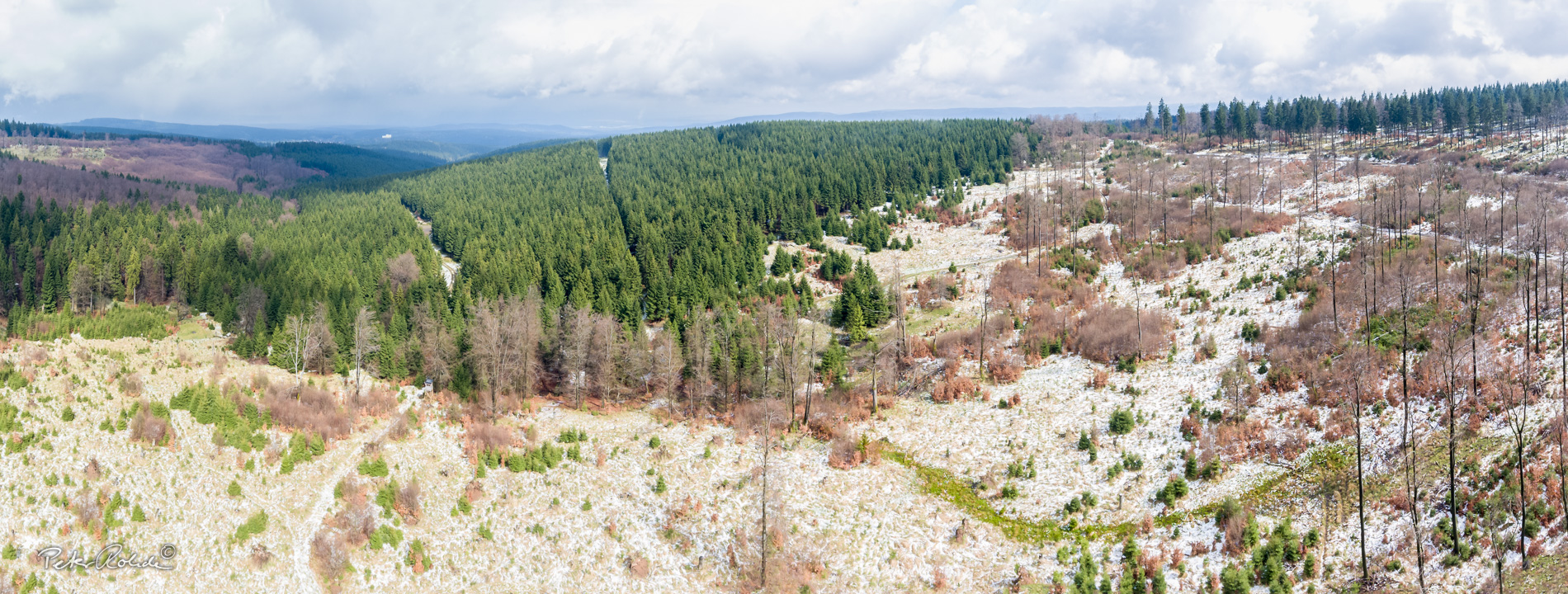









Insights into our daily work
Here we report at irregular intervals on the work of the geoscientists, geopark and mine guides, tourism experts and planners behind the scenes of the Geopark. Look forward to new insights into our daily work at the desk, in the Geopark, in the visitor mines and on research excavations.
No. 3 - Constant dripping wears the stone
Marienglashöhle, Friedrichroda, 18 July 2022
Today we are in the beautiful mountain and spa town of Friedrichroda on the northern edge of the Thuringian Forest and pay a visit to the Marienglashöhle. We talk to Andreas Hacker, who has been team leader and mine manager for the Marienglashöhle for a year.
Andreas, tell us and the visitors what your work in the Marienglashöhle is like!
If you like, as team leader I am responsible for organising visitor traffic, but also for the technical maintenance and security of the cave. This starts with drawing up duty rosters for the team of four, continues with regular guided tours, planning events such as weddings, concerts and special tours, and continues with safety checks in the cave as well as repairs and robberies if necessary. Every morning, for example, there is an initial inspection, during which a visual check of the cave is made. We then check whether the technology is working properly, whether there have been any ridge falls, whether the plaster bridges to control rock movements are intact and so on. But we also take care of the buildings, do the cleaning and maintain the outdoor facilities - the work is very varied and versatile, we certainly don't get bored.
What do you enjoy most about your job?
It's our visitors, who we guide through the former mine. They are always different people and no two tours are the same. Sometimes I lead a group of children, sometimes mostly adults. I have to decide what to say and how to say it so that the information we give about the mine and the crystal grotto gets across. I really enjoy telling children exciting stories about the cave, because they get excited easily. And we have many exciting stories here. Mining around Friedrichroda is very old and even Goethe was already crawling around underground here a few years before our wonderful crystal grotto was discovered. Incidentally, the Marienhöhle, as it used to be called, was already a tourist attraction in the mining days. When the mining of gypsum and anhydrite was finally stopped at the beginning of the 20th century, it became a mere show cave.
What do you find most exciting about your job?
Working in an old, abandoned mine is exciting in itself. Always learning something new about its history and incorporating this knowledge into our guided tours is what excites the whole team. This also involves continuing education, as cultural and mining history, geology and mineralogy come together here and the cave is inseparably linked to the people, nature and history of Friedrichroda. We also try to show this in our exhibitions on site.
The technical aspects are also very important. For the safety of the visitors, we carry out so-called robbing twice a year. Smaller pieces of rock are deliberately loosened from the cave ceiling, larger ones are technically anchored and secured in this way. And the mining authority also regularly inspects our cave and its safety. We are always involved in that.
Dewatering is also an important issue; we are constantly pumping it out, otherwise the cave would be flooded very quickly. The large amount of water from the mountain was already a problem in the open-cast mine above the cave at that time, and the Herzog-Ernst-Stollen, today's entrance gallery, was supposed to provide a remedy. When it rains heavily, you notice immediately that a lot of water comes down here and it has to come out again. We have a pumping station that can pump out up to 80 litres per minute, which is then fed into a stream outside the cave. But we also have the crystal grotto to thank for all the water. The constant influx of surface water dissolved the anhydrite, water-filled caverns formed and the gypsum crystals then grew to considerable size in the highly mineralised water. The fact that they were not completely mined is due to the prudence of the ducal administration at the time, which had the foresight to prohibit mining. Otherwise there would be none of it left today. These are the stories we want to tell our visitors here. With us, you can actually experience the proverb "Constant dripping wears away the stone".
Are there also things that are not so beautiful?
Of course there are, like everywhere. Sometimes I would wish for a little more understanding from our guests with regard to the tours. We are bound to a fixed schedule so as not to create chaos. Sometimes there are longer waiting times due to the rush of visitors at peak times and the heavy workload of staff. Not everyone has the patience for this and we sometimes feel the guests' displeasure. However, we do our best to run the operation as smoothly as possible and usually it works. But we also have the problem that all of us cave guides are older. Little by little, we are passing on the baton and we are looking for new staff. That's not so easy, because holidays, public holidays and weekends are the times when most visitors come to see us. This is only possible with the greatest possible flexibility, and it is difficult to find someone like that, to train them and to keep them. A lot of things have to fit.
What do you wish for the future of the cave?
That visitors continue to come to us and want to learn about mining on gypsum and anhydrite as well as the geology of the Thuringian Forest. The Marienglashöhle is a monument to mining history, even though it goes by the name of "cave". The crystal grotto alone is worth a visit. In the future, we also want to expand the tourist offer and show new exhibition parts. But that will only be possible if we can secure the operation in terms of staff.
Andreas, thank you very much for the interview!
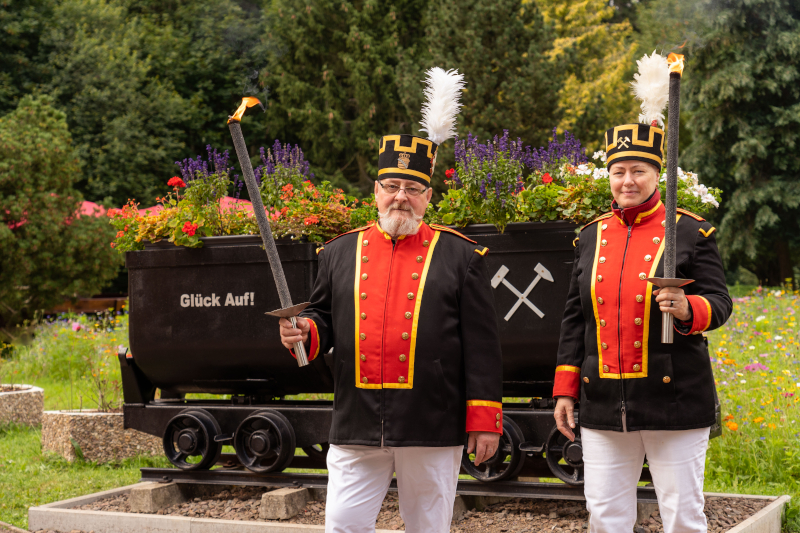
No. 2 – Mine maintenance
"Hühn" Visitor Mine, Brotterode-Trusetal, 13 April 2022
Today we are talking to the trained miner and operations manager of the "Hühn" visitor mine, Thomas Kaebel from Brotterode-Trusetal. Together with his colleagues from the association Bergbau und Heimat Trusetal e.V., he is responsible, among other things, for mine tours and the technical maintenance of the visitor mine.
Thomas, tell us what you do in mine maintenance, abbreviated to "GU" in miners' language.
Essentially, we are responsible for the safety and maintenance of the visitor mine. It starts with daily safety checks, continues with structural repairs, and ends with measuring gas concentrations and ensuring that the mine is well ventilated. The work is especially hard when massive stamps have to be renewed and the tunnels have to be relined so that our visitors remember a safe mining experience and nothing falls on their heads.
When do you do all this?
Most of the mine maintenance takes place in the winter months, when visitor activity is still at a standstill, i.e. shortly before the start of the season. That's when we have our hands full, repairing the damage that water penetration has caused to the wooden fixtures. The mine devours huge amounts of wood in the process. From time to time, the technical installations such as lighting and power supply for the compressors also have to be checked. Actually, as in any business, something always breaks down. Even if it's just a small light bulb. In the mine, however, even that is a challenge because you can't just go to the materials store and get a replacement. You have to think carefully about what to do and how, because some of the ways are long and difficult.
Let's stay on the subject of long distances. How far does the mine actually reach underground?
In active times, you could walk from Atterode to Atzerode, which is quite a distance. Today, however, that is no longer possible, because some of the galleries and shafts are under water and most of them have been closed down because mining ceased with the fall of the Berlin Wall more than 30 years ago. It is also life-threatening because the galleries are no longer regularly secured and are no longer adequately ventilated. It would not be a good idea to go in there!
What would you describe as the most exciting thing about your job?
It's definitely the mining history around Trusetal, which we want to bring closer to our visitors. Here in Trusetal and the surrounding area, mining was carried out for centuries, so we have a very rich mining history. The diverse geology of our area with its ore and spar deposits is also very interesting - it is the basis of our mining.
What do you wish for the future of the "Hühn" visitor mine?
That we can welcome more visitors again! The "Hühn" visitor mine is unique in the region and offers many exciting discoveries and interesting facts about centuries of mining on the southern edge of the Thuringian Forest. In the meantime, the mine has become a cultural and industrial-historical treasure that we would like to develop further. But this is only possible if all those responsible pull together and are aware of the potential of our mine. The fact that Brotterode-Trusetal is part of the UNESCO Global Geopark Thuringia Inselsberg - Drei Gleichen makes us very confident that we can achieve something together. In 2020, with financial support from the state and the city, we were already able to renovate the dilapidated wooden bridge to the spar bunker, the Trusetal mining trail (GeoRoute 16) is currently being revised, and we have many ideas for other exciting projects that will increase the attractiveness of the visitor mine. However, I am concerned about the new generation of mine guides and technical staff, i.e. trained miners. That is an important point, which we hope to get under control over time. If our concept works and the guests come to us, then I see a good future for our visitor mine.
Thomas, thank you very much for the interview. We wish you and your team every success with your plans!
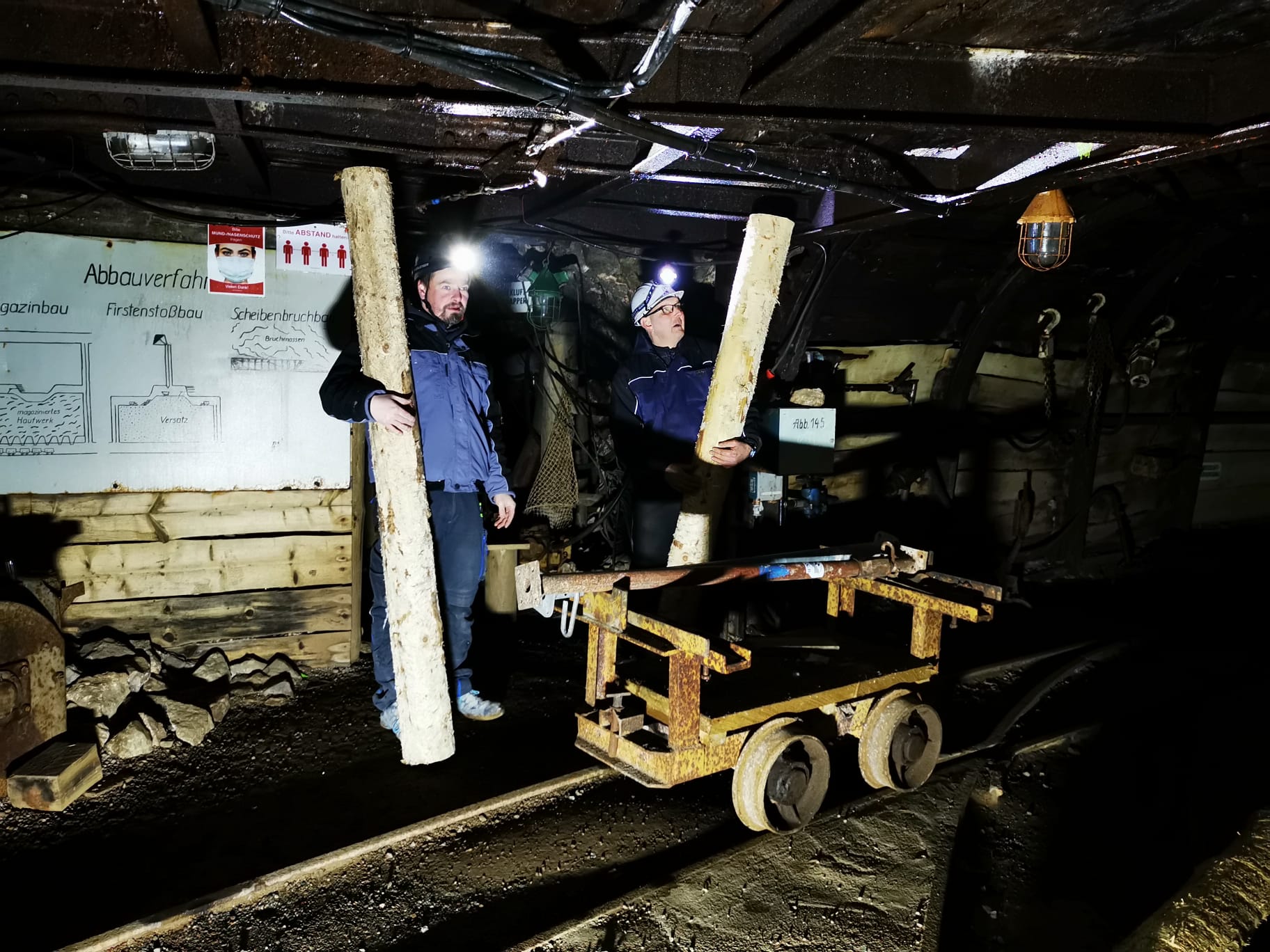
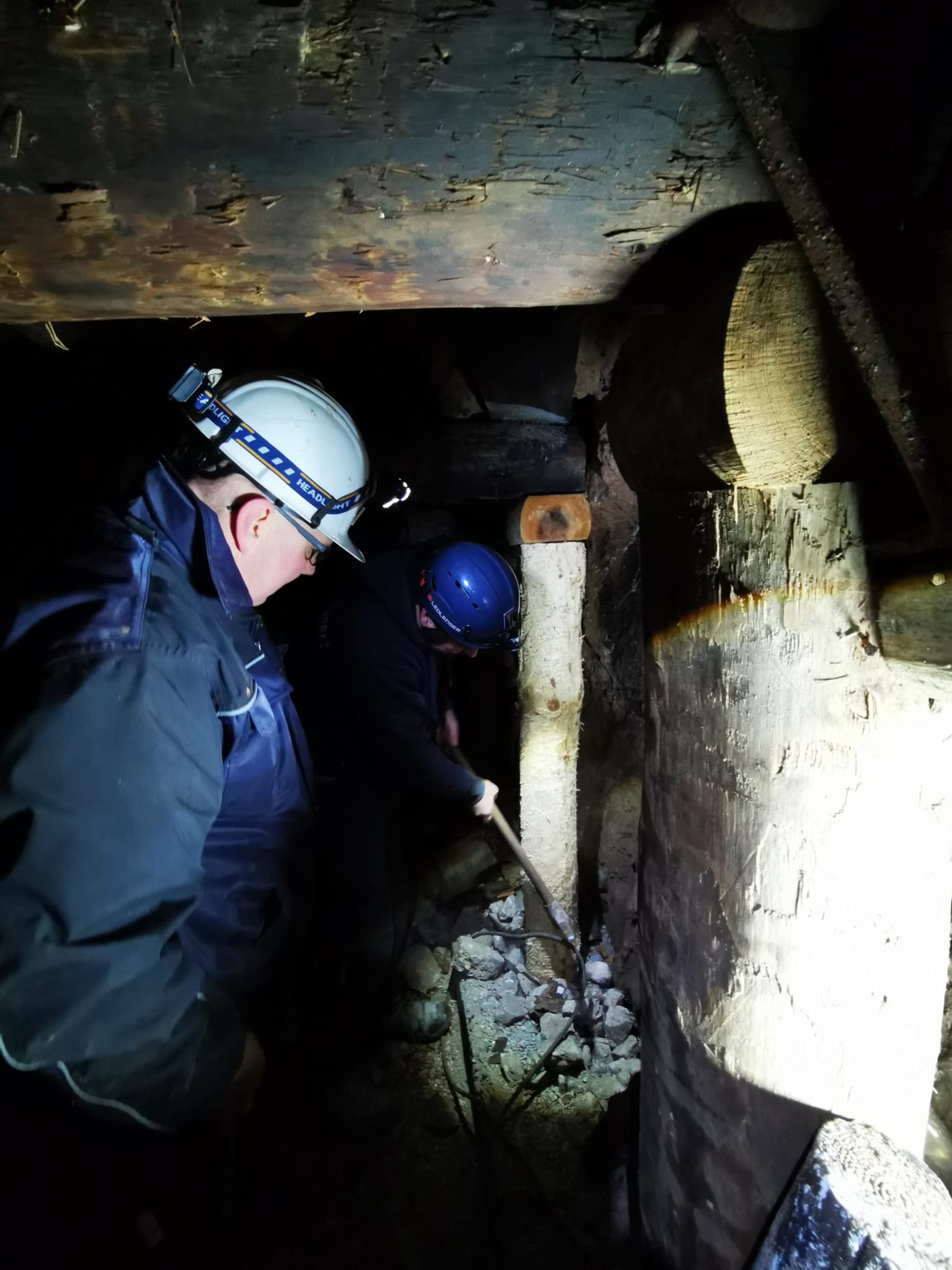
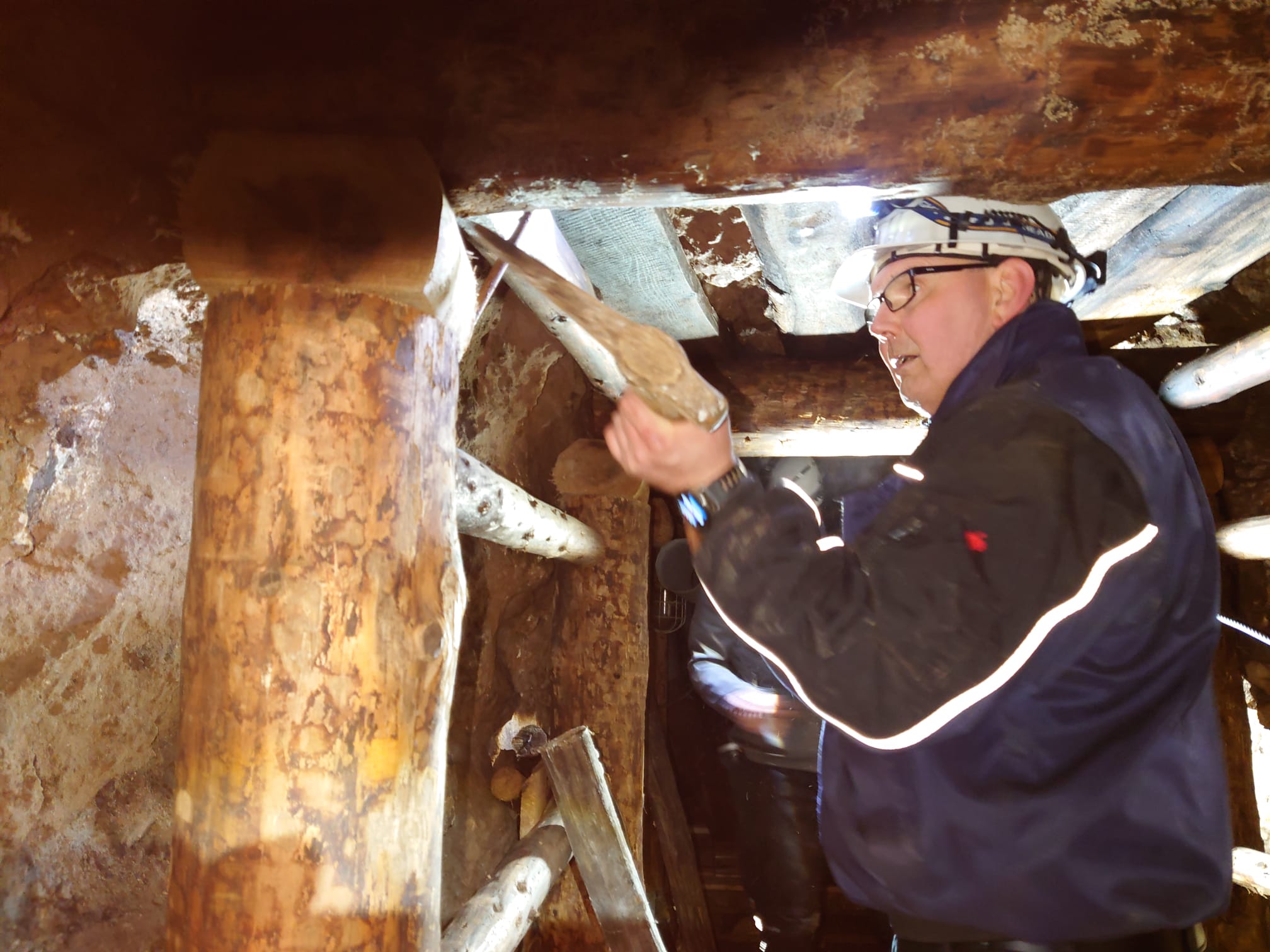
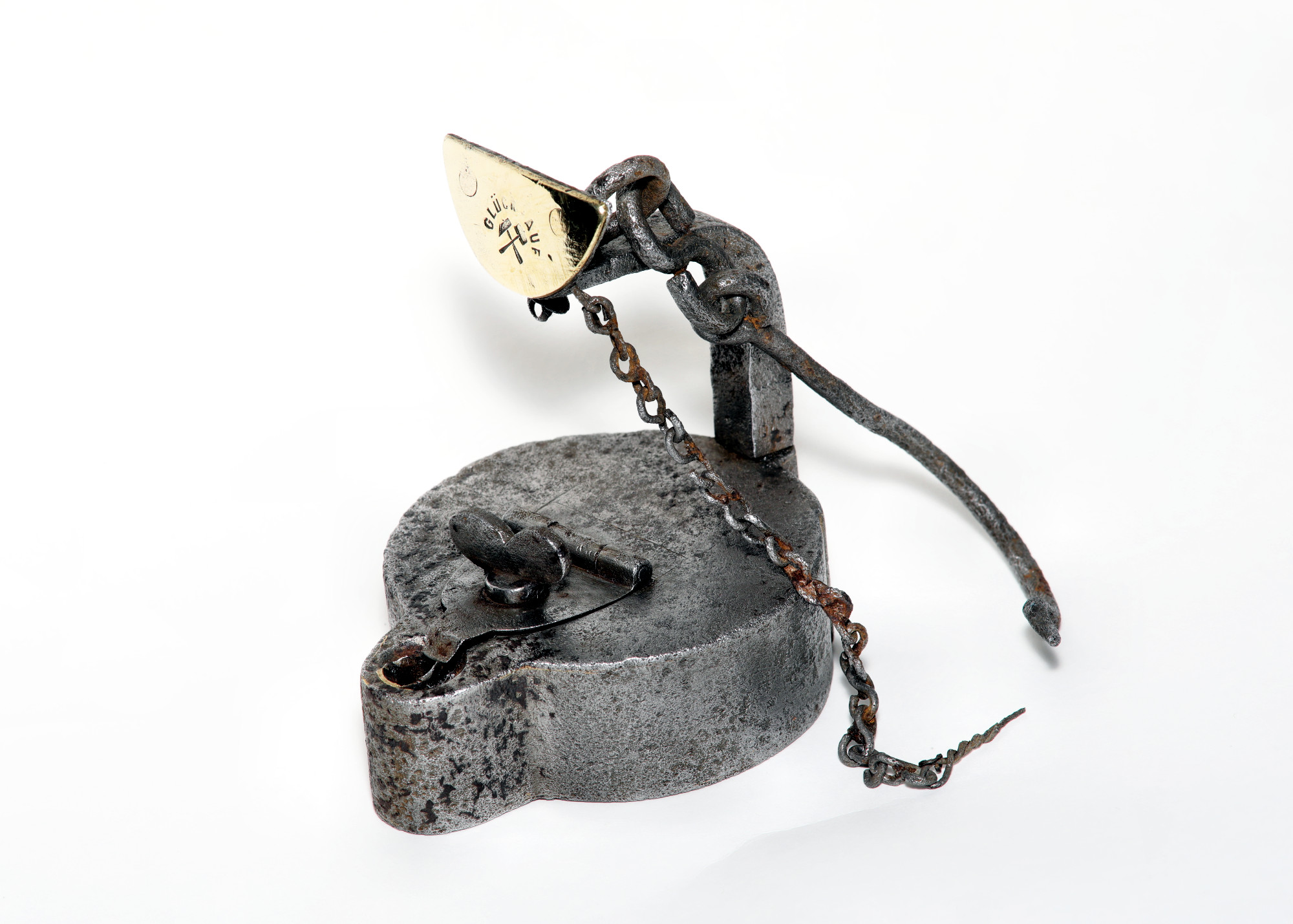
No. 1 - The work behind the Geopark's collections
"Hühn" visitor mine, Brotterode-Trusetal, 18 March 2022
Whether fossils, minerals, ores or rocks - behind every exhibition, presentation or even just a photo is the work on the collections available in the Geopark, which is usually not visible to the public. This includes a professional inventory of the pieces on site and in a database as well as the photographic recording for documentation or for publications. Geopark geologist Stephan Brauner supports this work with specialist knowledge and photographic technology - as here with the recording of the mineralogical and historical collection of the "Hühn" visitor mine in Brotterode-Trusetal.
The aim is to document the collection(s) as completely as possible, to secure the information about the collection pieces and to add to it if necessary, because a good collection consists not only of the pieces themselves, but also of the most varied information about the chemical composition, origin, circumstances of the find and the finder. This sometimes requires detective work and the deciphering of old manuscripts and collecion labels in Kurrent or Sütterlin.
